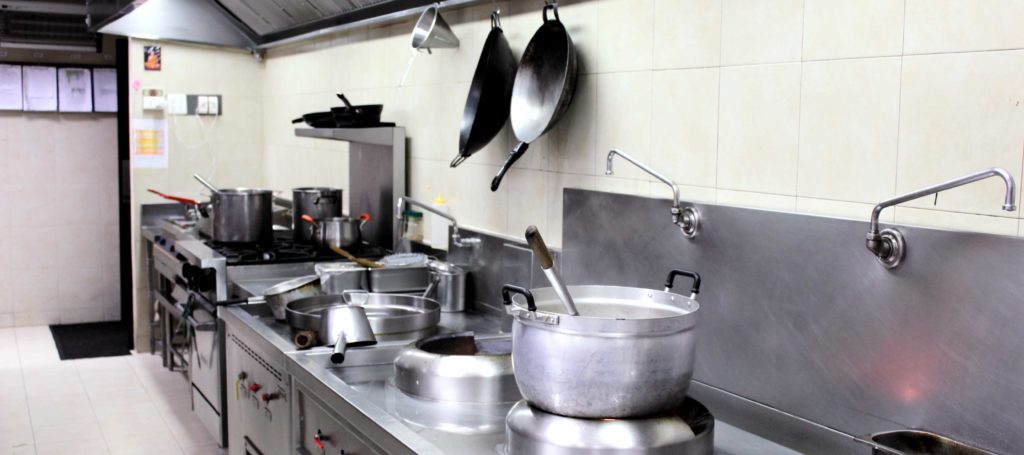How Your Cafeteria Grease Trap Design Impacts Safety and Functionality
Have you heard of the Whitechapel Monster?
This enormous grease blockage of the London sewers gave rise to the term "fatberg" in the early part of 2015. Described as longer than Tower Bridge and the weight of 11 double-decker buses, the stinking, greasy mess required several weeks of removal. Most areas with modern plumbing and drainage require some sort of grease removal from wastewater to prevent these incidents.
If you run a commercial cafeteria, restaurant, school or hospital, not any grease trap will do. Your high-volume water discharge requires an external industrial interceptor with regular service.
Select the right grease trap design with our hints. Read on to learn more.
What is FOG?
FOG stands for Fat, Oil, and Grease. These are byproducts from food preparation, cooking, and cleaning. These wastes enter the sewer system via drains and congeal to clog lines.
FOG is a natural byproduct of most cooking and food preparation.
- Fats from meats, dairy & animal products
- Vegetable oil-containing food products
- Vegetable oils and lard used in baking, cooking & frying
- Oily residue from pots, pans, and dishes after cooking
- Oils naturally-present in most vegetables
Prevent these items from going down the drain in the first place by scraping plates and dishes well before washing them. Use of a garbage disposal often allows FOG to enter the system.
What Is a Grease Trap?
Even if you scrape plates and pans well before washing, there will be some residual grease remaining in the wash and rinse water. A grease trap retains the water and debris and allows the grease and particulate matter to separate out. The water is then discharged into a septic system or sanitary sewage system. On a periodic basis, the greasy slurry is removed.
A correctly sized and designed grease trap for large establishments affects both safety and function. Grease accumulation in pipes causes:
- Hygiene issues
- Foul odors
- Blocked drainpipes and sewers
- Restricted wastewater flow and backups
- Insect and vermin infestation
Health regulations generally require a grease trap sized to accommodate the largest expected flow of water in gallons per minute. Of course, a correctly designed grease interception system requires regular maintenance.
How Do Grease Traps Work?
To understand the need for regular maintenance, you need to understand the process to remove FOG from wastewater. Grease traps allow warm or hot greasy water cool. As the wastewater and FOG cool, it separates into different layers of wastes.
The large, commercial gravity or passive traps rely on time to separate FOG. internal baffling, standpipes and large retention tanks allow water to separate from FOG. FOG is lighter in density than water and floats at the top of the tank. Food debris sinks to the bottom of the tank.
The water in the middle, minus the layer of accumulated grease and minus the layer of food sludge, then drains to the sewer. For grease traps to be effective, the trap must be emptied when the sludge reaches 1/4 of the tank level. Grease traps at full capacity discharge 100% of the restaurant grease and wastewater into the sanitary sewer.
Grease Trap Design Flaws
A poorly designed or inadequately maintained grease trap discharges grease into the sewer system. This leads to costly backups and sanitary risks to public health. Regular removal and reclamation of grease and debris are required.
Even a well-maintained grease trap releases about 15% of the grease in wastewater to flow into the sanitary sewer. This grease load builds up somewhere. Unfortunately, it is often in neighboring businesses.
To maximize separation of FOG from effluent outflow, wastewater entering the grease trap is mixed with air and then allowed to cool and settle. However, for restaurants and other commercial kitchens, conventional grease traps do not have enough time to separate the FOG from the wastewater.
Fast and hot outflows from automatic dishwashing and three-compartment sink pot-washing bypass the grease trap. Control of these outflows before they enter the grease trap improves grease removal. Other changes to effective grease removal are solids entering the system. Coffee grounds, discharge from wastes disposal units, paper, etc. sink to the bottom of the grease trap.
This sludge displaces the middle layer of flowing water and allows greasy water to escape into the sewer system.
Design Solutions
To solve these two problems, of excess solids and too fast discharge, there are several suggestions. Prevent excess food solids from entering the system by using a separation device before the wastewater enters the system. In-sink strainers can be frustrating, as they slow down sink draining and clog quickly with large particles.
Options like centrifuge separators are expensive and require power. They also take up a large space. Consider use of a solids trap between your sink and grease trap. Properly installed, it is an effective replacement for a food waste disposal unit. It uses no power and it allows virtually no solid matter to enter the grease trap.
The problem of too fast discharge is less easily solved. A larger tank or intermediate cooling is required. Some newer dishwashing systems have built-in grease control modules to limit grease discharge.
Add Life to Your Grease Trap
Grease trap design is only part of the solution to eliminating FOG from sanitary sewer systems. Grease control begins in the kitchen. A program of routine food residue scraping into the bin before beginning the wash process is important.
Choose the correct grease trap sizing to allow enough time for wastewater to separate into layers. This protects the sanitary sewer system. Control of the quantity and temperature of the water discharge assists proper functioning of the grease trap.
Regular maintenance when the grease trap is 25% full is essential to maximizing grease trap efficiency. Part of your design should include provisions for regular inspection.
Ask our experts about how The Drain Strainer can replace your industrial garbage disposal unit and prevent grease trap failure. Contact us today.

